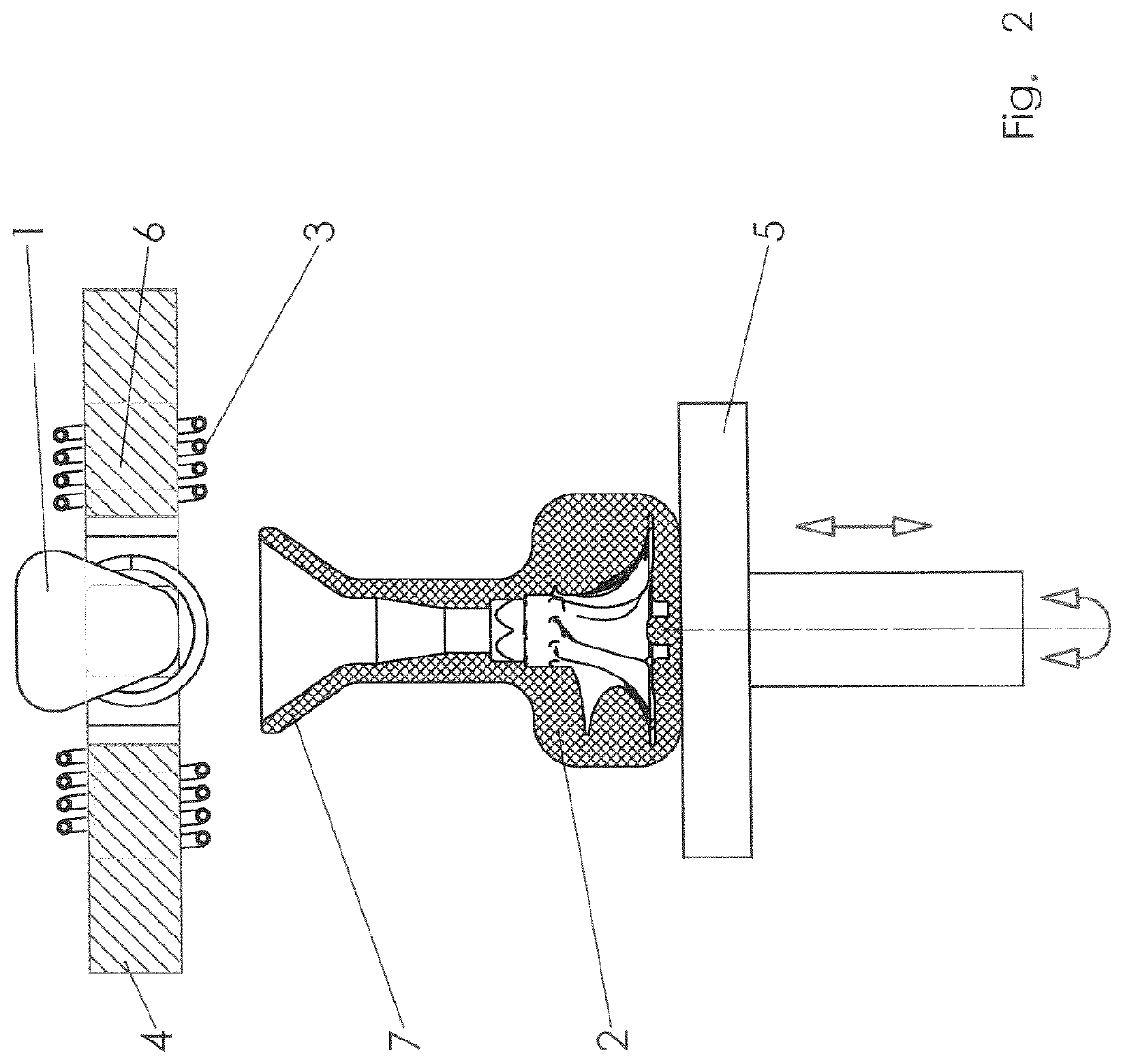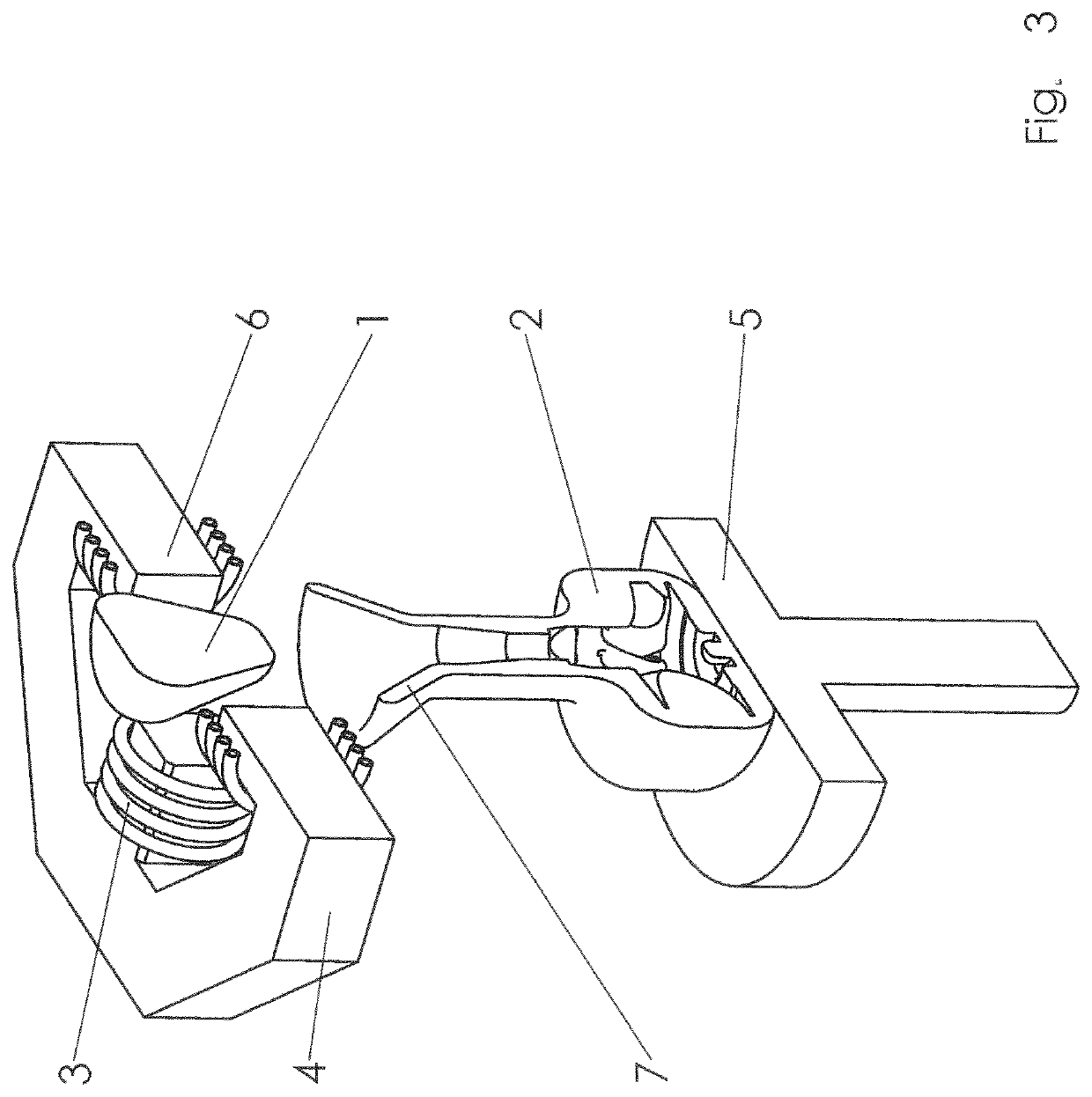Casting method
a casting method and casting technology, applied in the direction of coil arrangement, induction heating, electrical equipment, etc., can solve the problems of limiting the quantity of material that can be melted in this manner, unable to teach that molten charge is sufficient for filling the mold, and the levitation melting has not been established in practice, so as to avoid material loss and high throughput
- Summary
- Abstract
- Description
- Claims
- Application Information
AI Technical Summary
Benefits of technology
Problems solved by technology
Method used
Image
Examples
Embodiment Construction
[0017]In one embodiment, the method comprises the step of removing the filled mould from the filling region after pouring but prior to removal of the solidified cast item. This embodiment is employed to particular advantage when using lost moulds, since it frees up the filling region for another lost mould. In another embodiment, in particular when using a permanent mould, the removal of the cast item can take place in the filling region.
[0018]The solidified cast item can be removed in various ways. In one embodiment, the mould is destroyed when removing the cast item. This is referred to as the “lost mould” method. In another embodiment, the mould can be made as a permanent mould, in particular as a permanent die. Permanent dies are preferably made of a metallic material. They are suitable for simpler components.
[0019]A permanent mould preferably has two or more mould elements that can be separated from one another in order to remove the cast item. One or more ejectors can be used ...
PUM
| Property | Measurement | Unit |
|---|---|---|
| pressure | aaaaa | aaaaa |
| melting point | aaaaa | aaaaa |
| temperature | aaaaa | aaaaa |
Abstract
Description
Claims
Application Information
 Login to View More
Login to View More - R&D
- Intellectual Property
- Life Sciences
- Materials
- Tech Scout
- Unparalleled Data Quality
- Higher Quality Content
- 60% Fewer Hallucinations
Browse by: Latest US Patents, China's latest patents, Technical Efficacy Thesaurus, Application Domain, Technology Topic, Popular Technical Reports.
© 2025 PatSnap. All rights reserved.Legal|Privacy policy|Modern Slavery Act Transparency Statement|Sitemap|About US| Contact US: help@patsnap.com



